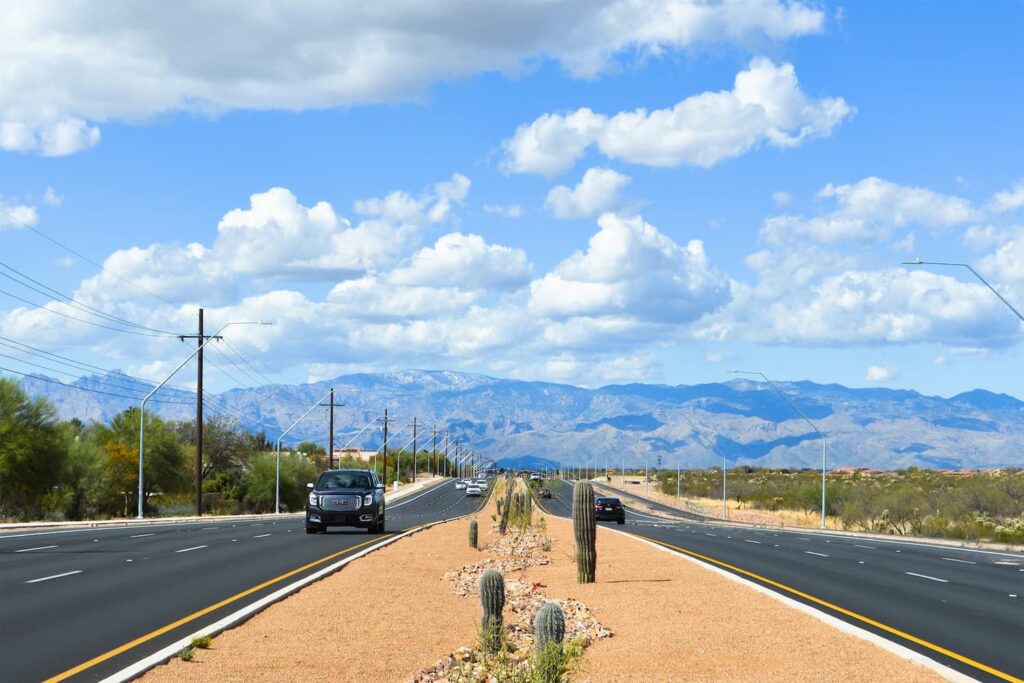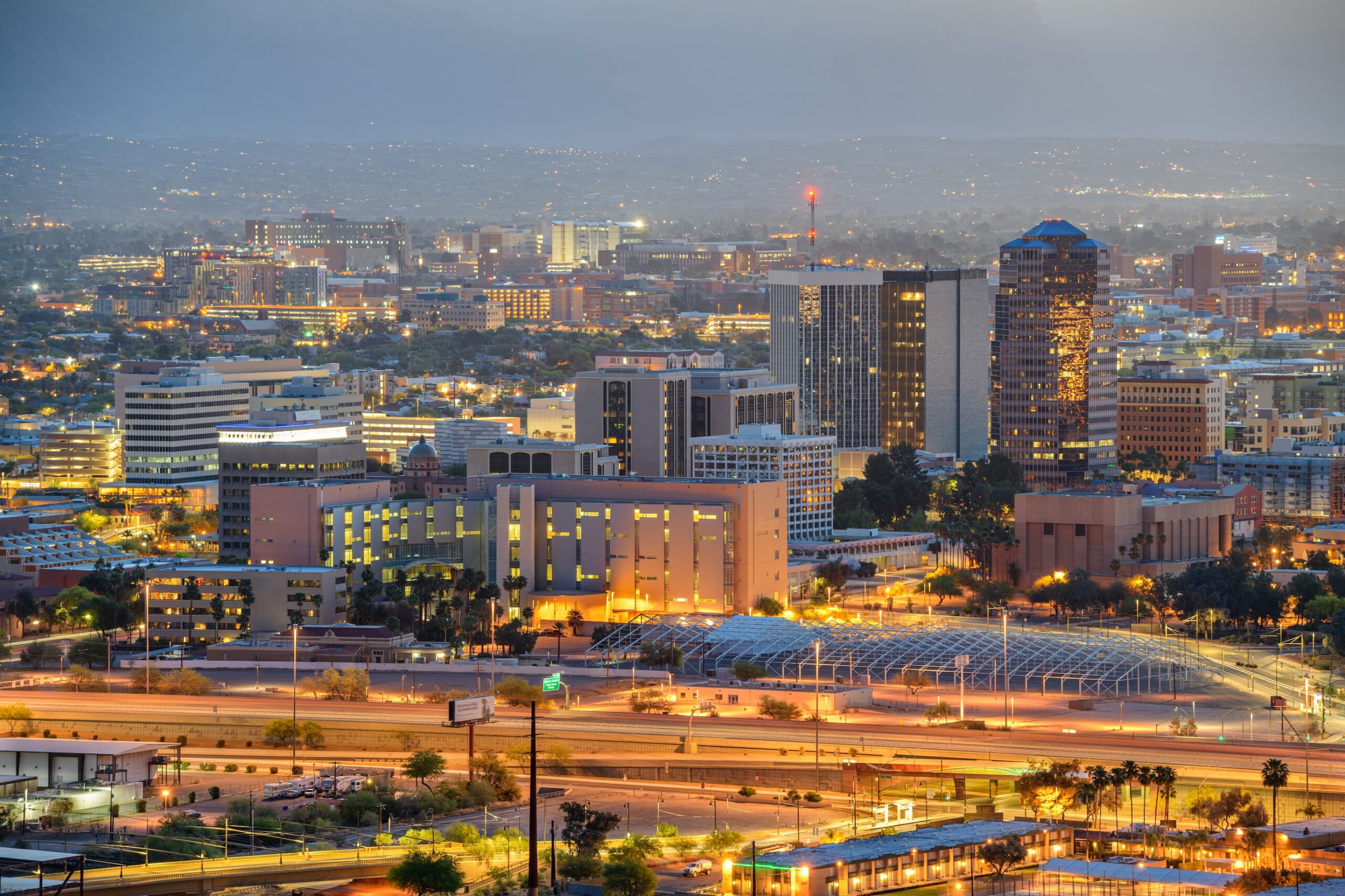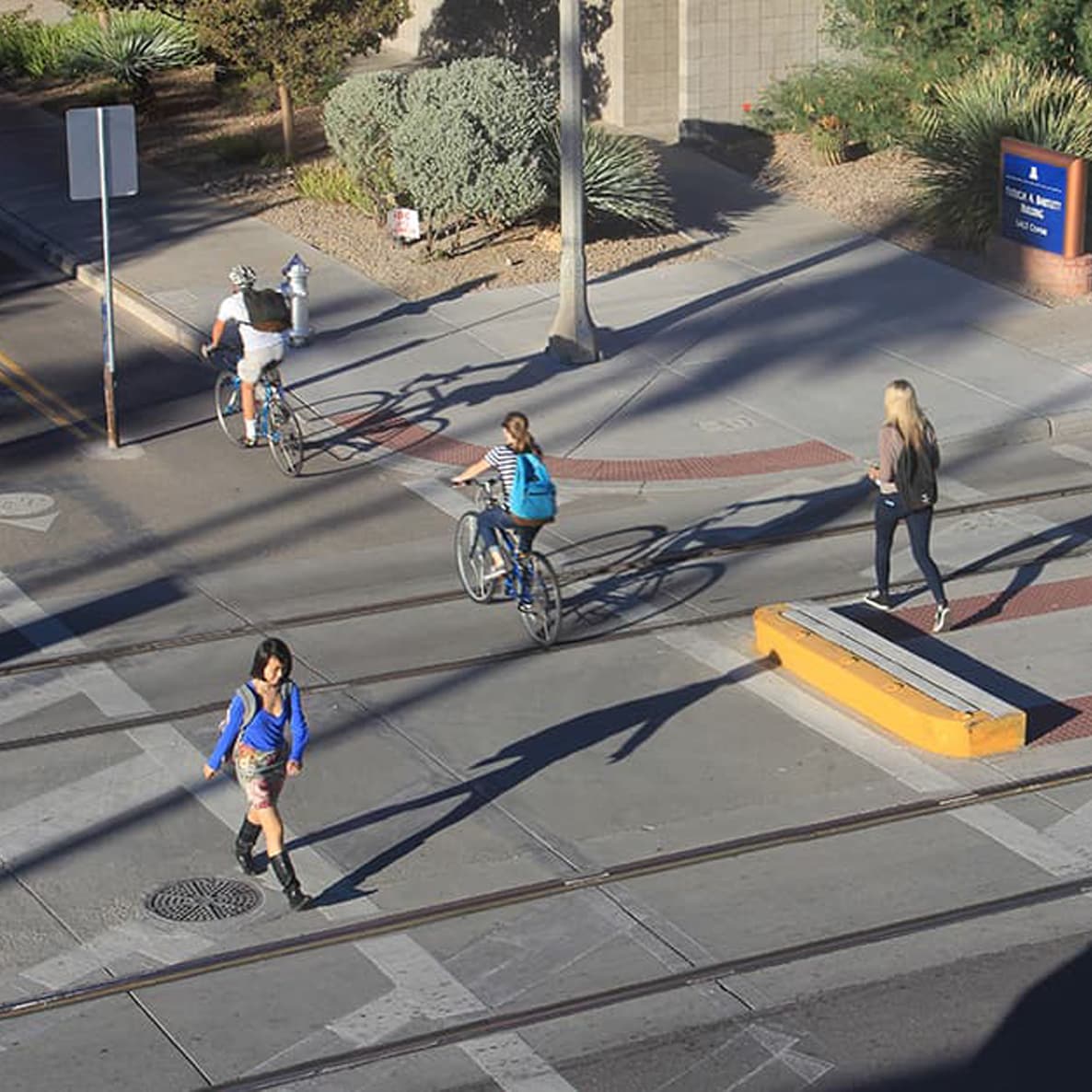
Shape Your Transportation Future
Pima Association of Governments, the region’s metropolitan planning organization, is developing a new long-range transportation plan for the Tucson metropolitan area. The process will include public and stakeholder input and ultimately plan approval by the PAG Regional Council, made up of local, county, state and tribal governments.
About 2055 Regional Mobility and Accessibility Plan
Overview
Pima Association of Governments is developing its new long-range transportation plan, the 2055 Regional Mobility and Accessibility Plan. PAG is required, as a metropolitan planning organization for the region, to adopt a new long-range plan every four years to secure millions in federal transportation dollars for the greater Tucson area.

Our History
We're improving mobility in the region
Since 1970, Pima Association of Governments has worked with our regional partners to identify and implement regional transportation projects that improve the performance of our regional transportation infrastructure and has been securing federal, state, regional and local dollars for thousands of projects over the years. A reliable transportation network supports economic development and job expansion, safety and security, and improved mobility and accessibility for people and goods. This, in turn, improves our region’s livability and sustainability for everyone.

Did you know Pima County is large in land size than some states?
It’s larger than New Jersey, Connecticut, Delaware and Rhode Island. With 9,189 square miles, ensuring people in all parts of the county can access essential services is critical in our transportation planning efforts. (Source: U.S. Census Bureau)
Did you now the number of vehicle miles traveled in the region in 2020 was 7.4 billion?
As that number continues to grow, we use transportation modeling to ensure we have a long-range plan to maintain the region’s livability and sustainability, while improving mobility options. (Source: EPA MOVES modeling)
Did you know that in 2022 Sun Tran provided nearly 13 million trips to passengers in the Tucson service area?
Improving and expanding transit options is key to reducing congestion and improving air quality. (Source: Sun Tran)
Did you know that 179 new miles of sidewalk have been added to the region's roadways in the past 15 years?
Gaps in sidewalks can make it unsafe, or even impossible, for some people to move throughout the region. New sidewalks always comply with standards set in the Americans with Disabilities Act. (Source: RTA sidewalk completions through June 2022.)

RMAP 2055 Timeline
What's next?
PAG continues to work with our jurisdictional partners to identify funding needs and is preparing robust public engagement efforts to understand regional transportation priorities. PAG will use public outreach feedback and data as part of its modeling exercises along with other information collected by transportation stakeholders and our members to draft the new 30-year plan for public comment.
Civil Rights and Title VI Information
PAG operates its programs without regard to race, color and national origin in compliance with Title VI of the Civil Rights Act. PAG opera sus programas sin distinción de raza, color u origen nacional, de conformidad con el Título VI de la Ley de Derechos Civiles.
If you need assistance with translation, please contact Zonia Kelley at (520) 792-1093. Si necesita ayuda con traducción, llame por favor al (520) 792-1093 y comuníquese con Zonia Kelley.
What is the Regional Mobility and Accessibility Plan?
The Regional Mobility and Accessibility Plan is a long-range, performance-based transportation plan with a 25- to 30-year outlook that promotes a safe and efficient transportation network across the Tucson metropolitan area. Plan development considerations include accessible pedestrian walkways, bicycle transportation facilities, intermodal facilities, buses, bus facilities and commuter vanpool providers to meet the needs for the movement of people and goods in the region.
What is Pima Association of Governments?
Pima Association of Governments is a metropolitan planning organization, designated by the state in 1973 to comply with federal transportation planning requirements. PAG also is the designated planning agency for air quality, water quality management and solid waste, and administers a travel reduction program. In 2004, PAG also led the establishment of the Regional Transportation Authority, a regional taxing district within Pima County. The RTA’s 20-year regional transportation plan and a half-cent sales tax were approved by voters in 2006. The plan and tax are identified as part of PAG’s Regional Mobility and Accessibility Plan.
Regional Partners
PAG members include Pima County, the cities of Tucson and South Tucson, the towns of Marana, Oro Valley and Sahuarita, the Pascua Yaqui Tribe, the Tohono O’odham Nation, and the Arizona Department of Transportation.
What federal planning factors are considered in plan development?
Federal planning factors considered for long-range plan development are to:
- Support the economic vitality of the metropolitan area, especially by enabling global competitiveness, productivity, and efficiency
- Increase the safety of the transportation system for motorized and non-motorized users
- Increase the security of the transportation system for motorized and non-motorized users
- Increase accessibility and mobility of people and freight
- Protect and enhance the environment, promote energy conservation, improve the quality of life, and promote consistency between transportation improvements and state and local planned growth and economic development patterns
- Enhance the integration and connectivity of the transportation system, across and between modes, for people and freight
- Promote efficient system management and operation
- Emphasize the preservation of the existing transportation system
- Improve the resiliency and reliability of the transportation system and reduce or mitigate stormwater impacts of surface transportation
- Enhance travel and tourism
How is the public involved in plan development?
Pima Association of Governments will engage the public through stakeholder outreach as well as through public engagement efforts anticipated to be conducted by the Regional Transportation Authority as part of RTA Next draft plan outreach in 2024. The content of the RTA Next plan will represent a significant portion of the 2055 RMAP. Additional opportunities for public input will include a public comment period and public hearing on the 2055 RMAP draft plan, which is expected to be presented to the PAG Regional Council for adoption in 2024 or 2025.
Planning Considerations
Transportation Modeling
Models that help predict the region’s future transportation needs are being developed. The inputs include land use information, population numbers and Census projections, travel trends and more. These are used to gauge the region’s needs and evaluate performance of projects.

Air Quality Modeling
The PAG region must stay in compliance with certain air quality standards, such as the level of ozone and other pollutants. Air quality monitoring helps determine how regional transportation improvements, as spelled out in the long-range plan, affect air quality.

Public Engagement
It is critical that the public weigh in on priorities for transportation planning. PAG will conduct a thorough public engagement process before the draft plan is complete.

Stakeholder Engagement
The region’s stakeholders include all nine members of the PAG Regional Council, who represent local government entities. Stakeholders also include interest groups such as business/industry, users of certain modes of transportation, and more.

Public Comment




